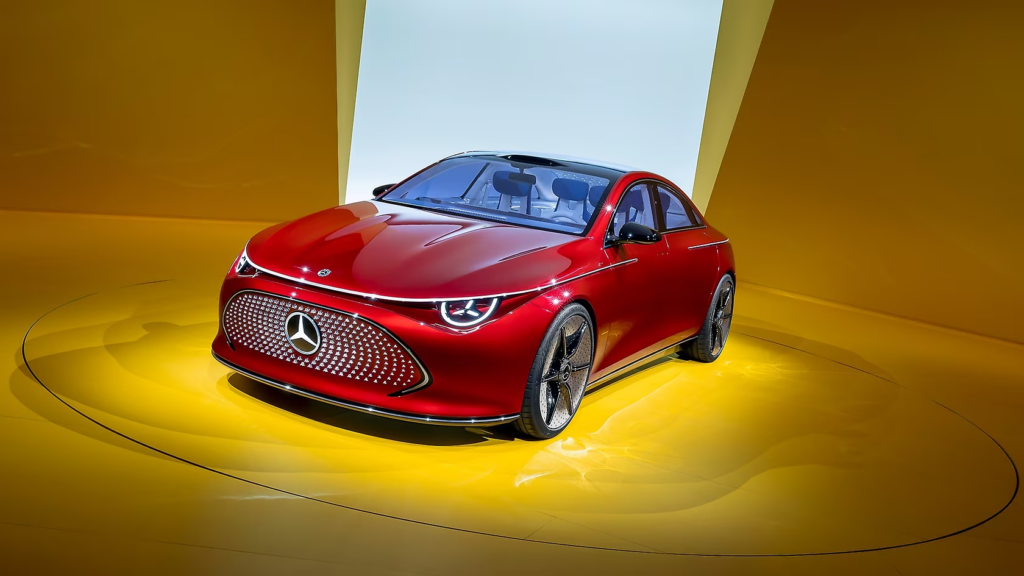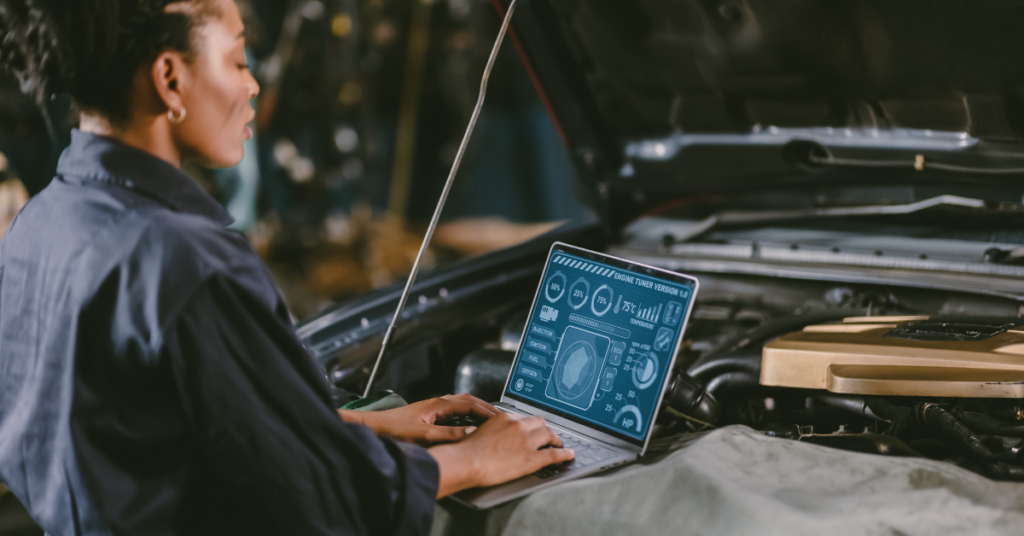Mercedes-Benz is making groundbreaking advancements in its electric vehicle (EV) technology. The latest innovations highlight efficiency, performance, and sustainability in every detail.
The automaker’s bold steps showcase its commitment to shaping the future of mobility.
The company’s Electric Drive Unit (EDU 2.0) represents a significant leap in EV engineering. It will debut in the all-electric Mercedes-Benz Modular Architecture (MMA) models.
This new drivetrain integrates technology from the visionary VISION EQXX concept car.
The rear axle features a 200 kW permanently excited synchronous motor (PSM) at its core. Developed in-house, it promises powerful yet efficient performance—this motor pairs with silicon carbide (SiC) inverters, reducing energy loss during operation.
Mercedes-Benz adds an 80 kW motor to the front axle for models with all-wheel drive. Like its counterpart, this unit includes SiC inverter technology. Together, these components deliver exceptional traction and handling.
Efficiency drives the design of the EDU 2.0 system. Mercedes-Benz targets a WLTP-certified range exceeding 750 kilometers for the Concept CLA Class. This efficiency is not just theoretical but optimized for real-world conditions.
On long journeys, the drivetrain achieves a 93% battery-to-wheel efficiency. Such performance translates to longer ranges with less energy consumption.
A two-speed gearbox further boosts efficiency while enhancing driving dynamics.
Charging times, often a pain point for EVs, receive significant improvements. Mercedes-Benz introduces an 800-volt system. This architecture enables ultra-fast DC charging of up to 320 kW.
Drivers can charge their vehicle for up to 300 kilometers of range in just minutes. This convenience reduces downtime during long trips. With such advancements, electric cars are becoming more practical than ever.

Mercedes-Benz has also redefined battery technology for its new models. Customers can choose between two battery configurations, including a premium 85 kWh option.
This version uses silicon oxide in its anodes to enhance energy density.
The premium battery achieves 20% greater gravimetric energy density than its predecessor. At the cell level, its volumetric energy density reaches 680 Wh/l.
Safety remains a priority in the new battery design. Engineers have integrated the battery housing into the vehicle structure. This integration meets stringent crash safety standards while preserving vehicle integrity.
Mercedes-Benz also addresses thermal safety concerns. The battery system includes measures to prevent thermal runaway. These precautions ensure peace of mind for drivers and passengers alike.
The new Concept CLA Class has already proven its capabilities in rigorous testing. A pre-production model covered 3,717 kilometers in just 24 hours at Nardò, Italy.
Software development plays a critical role in these advancements. The Electric Software Hub (ESH), launched in 2022, streamlines innovation. It is located in Sindelfingen and combines hardware, software, and system integration under one roof.
This centralized approach accelerates the development of next-generation vehicles. Engineers can test and refine technologies faster, resulting in a seamless blend of cutting-edge features and user-friendly performance.
Although all-electric vehicles are the future, hybrids still have a role in the transition. Shortly after launching its electric models, Mercedes-Benz will release a 48-volt hybrid version of the CLA.
This system combines a new four-cylinder petrol engine with an electric motor.

The hybrid motor delivers up to 20 kW of electric power. It allows energy recuperation and all-electric driving in urban areas. Drivers can also enjoy electric coasting up to 100 km/h.
Mercedes-Benz pairs this setup with an electrified eight-speed dual-clutch transmission. The hybrid system will be available in three power levels: 100 kW, 120 kW, and 140 kW.
The car manufacturer is persistently expanding the limits of innovation. Its new electric drivetrains, advanced batteries, and fast-charging systems are reshaping the industry.
These technologies demonstrate a commitment to both performance and sustainability.
The new battery systems perform better and use resources more efficiently. By optimizing materials, Mercedes-Benz reduces environmental impact without compromising quality.
The record-breaking endurance tests highlight real-world readiness. Drivers won’t have to worry about sacrificing reliability for innovation. These advancements prove that EVs can deliver both range and durability.
Fast charging will be a game changer for many customers. The ability to gain hundreds of kilometers in minutes makes long-distance travel feasible. This improvement addresses one of the key barriers to EV adoption.
Mercedes-Benz is leading the charge, quite literally, into an electric future. The company is setting new standards with technologies like EDU 2.0 and SiC inverters.
These advancements make EVs more appealing, efficient, and practical.
The hybrid CLA offers an excellent option for customers who prefer a transitional solution. Its combination of electric and petrol power delivers flexibility and efficiency.
This approach ensures that every driver is included in the move toward electrification.
The Electric Software Hub streamlines every step of vehicle development. By housing critical functions together, Mercedes-Benz ensures faster innovation cycles.
Mercedes-Benz’s focus on efficiency, endurance, and safety positions it as a leader in the EV market. These innovations aren’t just about keeping up with competitors.
They’re about redefining what’s possible in modern transportation.
With every new model, the company takes another step toward its vision of sustainable mobility. Whether it’s fast charging, advanced batteries, or groundbreaking drivetrains, Mercedes-Benz is paving the way forward.
It is not just evolution—it’s a revolution in how we move.
